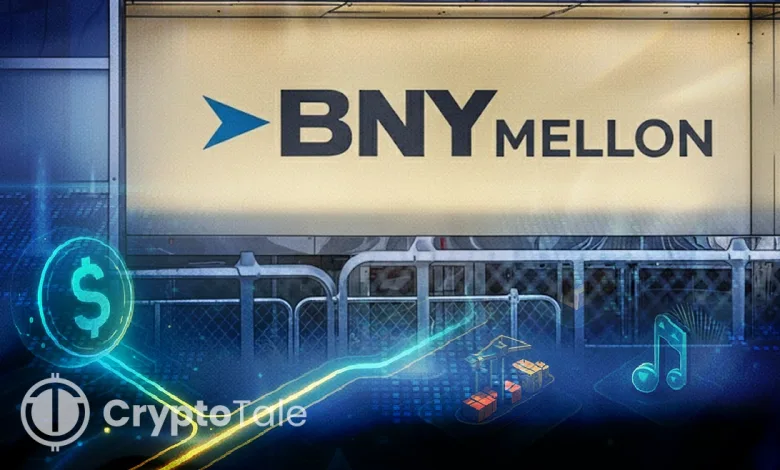BNY Explores Tokenized Deposits as Blockchain Grows

- BNY Mellon explores tokenized deposits to enable faster blockchain-based payments.
- JPMorgan and HSBC expand blockchain payment systems through new deposit token pilots.
- Swift and 30 banks collaborate on a blockchain ledger for fast cross-border transfers.
Bank of New York Mellon Corp is developing tokenized deposits to enable clients to make payments over blockchain networks. The move, confirmed on October 7, 2025, by Carl Slabicki, executive platform owner for Treasury Services, aims to modernize the bank’s infrastructure. The initiative seeks to enhance real-time, instant, and cross-border transactions.
Part of a Broader Modernization Push
According to Slabicki, the project forms part of BNY’s long-term modernization agenda. He stated that tokenized deposits could help “banks overcome legacy technology constraints,” improving how deposits and payments flow across banking sectors. The New York-based bank currently processes about $2.5 trillion in daily payments and oversees roughly $55.8 trillion in assets under custody and administration.
Tokenized deposits represent transferable digital coins issued by banks that indicate a claim on traditional deposits. By settling transactions on blockchain methods, these tokens enable near instant transfers that operate continuously. This is a contrast with existing systems, which rely on intermediary networks that restrict transactions to specific hours or business days.
BNY’s involvement shows how major financial institutions are adopting digital infrastructure to improve payment efficiency. This also aligns with increasing global interest in blockchain-based money as a bridge between traditional banking and emerging digital asset markets.
Global Banks and Blockchain Payment Systems
BNY Mellon’s work follows a surge in tokenization efforts among leading financial firms. In June, JPMorgan Chase & Co. introduced a pilot for its U.S. dollar deposit token, named JPMD, running on Coinbase’s Base network.
Meanwhile, HSBC Holdings Plc launched a tokenized deposit service meant for corporate clients, enabling them to move funds securely across borders using blockchain infrastructure. A coalition of nine European banks, which includes UniCredit SpA, ING Groep NV, and DekaBank, revealed plans to develop a joint stablecoin.
This effort focuses on building a regulated, interoperable blockchain system across European markets. While some banks lean toward stablecoins, others are opting for tokenized deposits, viewing them as a familiar yet advanced form of commercial bank money.
This coincides with growing regulatory clarity. The United States recently introduced a framework governing stablecoins, while MiCA regulations began implementation last year. These policies aim to standardize how banks and fintech firms deploy digital assets within existing legal boundaries.
Related: Goldman Sachs Emerges as Top Holder of Ethereum ETFs
Expanding Blockchain Integration
BNY Mellon has already made several moves to strengthen its blockchain participation. In July, it announced a collaboration with Goldman Sachs Group Inc. to maintain tokenized ownership records of money market funds using blockchain technology. This project aims to enhance collateral mobility and speed up settlement processes.
Moreover, BNY is part of a consortium of over 30 international banks working with SWIFT to develop a blockchain-based shared ledger prototype. The prototype focuses on enabling real-time cross-border payments between global financial institutions. Such developments show the growing alignment between traditional banking networks and blockchain innovation.
Tokenized deposits could be important in linking these systems. They would allow tokenized assets, like bonds or equities, to settle directly using digital representations of cash. This alignment between onchain assets and onchain money could streamline settlement times, reduce costs, and improve liquidity management across financial markets.
BNY’s latest exploration, therefore, complements its ongoing initiatives in digital custody, payment innovation, and blockchain integration. As global financial systems are modernizing, banks are positioning themselves to operate efficiently within both traditional and blockchain-based infrastructures.
Meanwhile, BNY Mellon’s exploration of tokenized deposits shows its drive to integrate blockchain into mainstream finance. The project connects ongoing developments across JPMorgan, HSBC, and SWIFT, emphasizing how banks are digitizing core payment processes. Together, these advancements suggest a coordinated move toward faster, continuous, and more transparent global payment systems.





